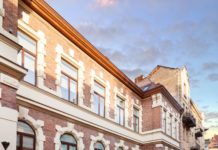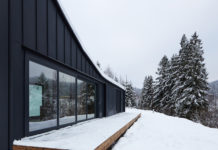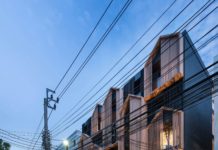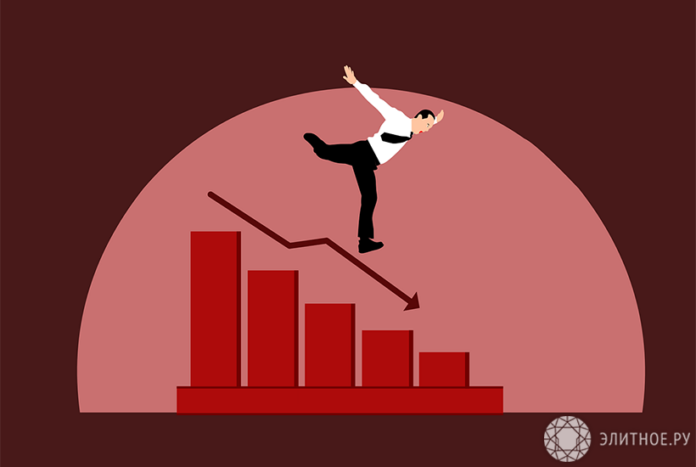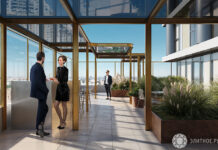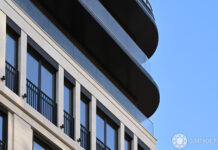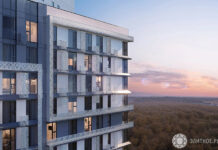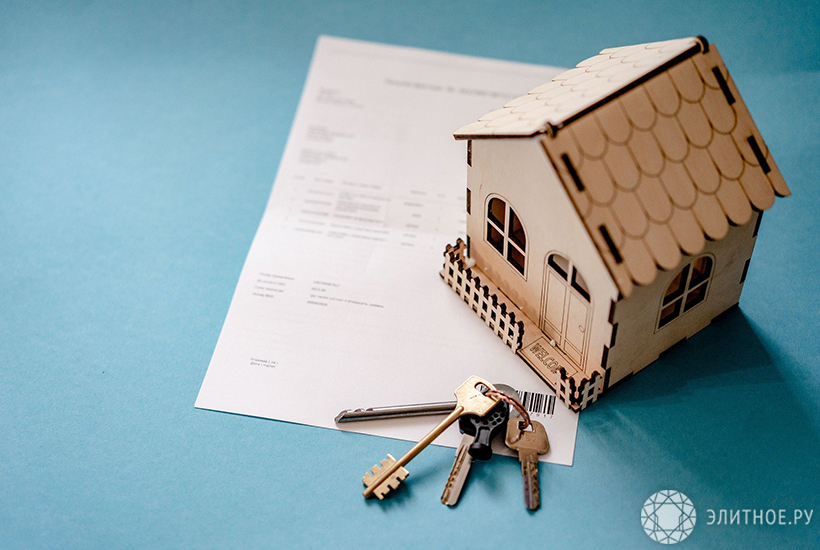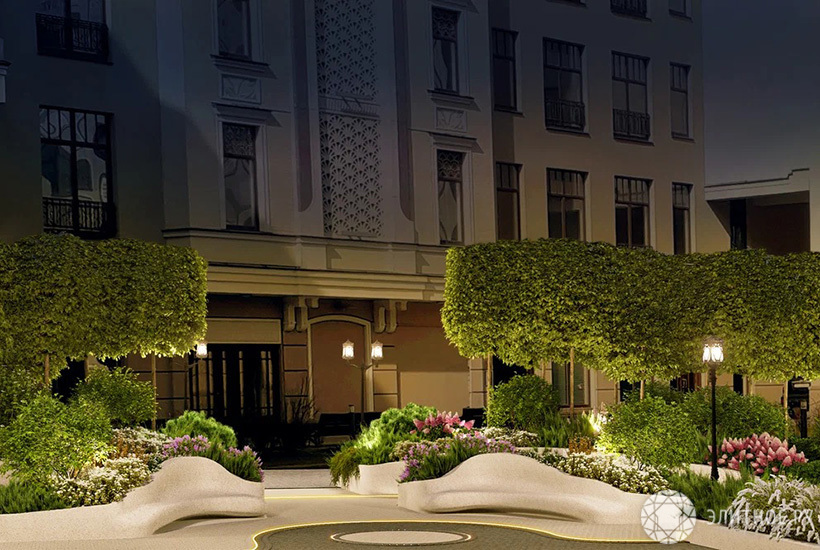Instead of a slight decline, likely after the records of 2021, the year brought a new crisis and a drop in demand
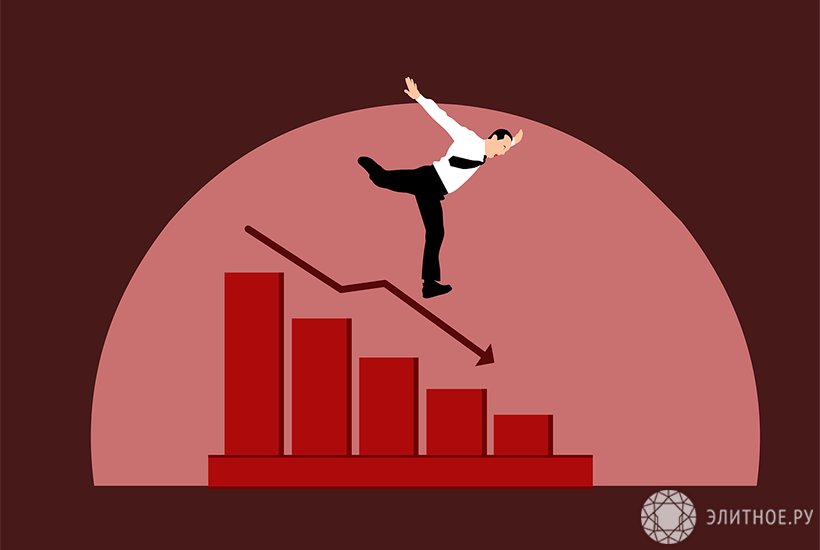
Last year was a record year for the Moscow real estate market. No records were expected in 2022. They predicted, rather, a slowdown in growth. January greeted the market with a traditional calm after the holidays. In February, demand, as usual, increased: almost 1.5 times both in new buildings and in the “secondary”. In the first, according to Rosreestr, 10.1 thousand apartments were bought under DDU, 13.4 thousand transactions took place on the secondary market. And from these high positions, the market entered a new crisis after the events of February 24.
At the end of the month, the Central Bank raised the key rate from 9.5% to a record 20%, followed by a rise in prices for mortgages, the main driver of demand for housing. But it showed up a month later. And then there was a sharp surge in activity of buyers. People entered the market with “live” money, who, in the face of economic instability, wanted to keep their savings. Mortgage borrowers, who had previously received a positive decision from the bank, were also in a hurry to close deals. Because of the hype, some developers began to actively change their prices, while others, on the contrary, announced a price freeze. The secondary market reacted weaker. The owners were at a loss and were in no hurry to change the value, some even changed their minds about selling the property. Against this background, demand in new buildings decreased by 7% in March. The share of mortgage transactions in the Moscow region, according to CIAN, was at the lowest level this year – 62%. On the “secondary” the number of transactions increased by 36%.
In April, the situation was already affected by mortgage rates that had risen to the barrage. For example, on February 28, VTB increased mortgage rates by 4%, to 15.3%, on March 1, Sberbank – by 7.3%, to 18.6%, and on March 4, VTB raised rates again – to 22 ,four%. In April, the conditions for the preferential state program for new buildings also changed: the rate was increased from 7% to 12%. In the same month, the Bank of Russia lowered the key rate by 3%, at the beginning and end of May – by another 6% in total. To maintain sales, developers began to increasingly additionally subsidize rates, programs with near-zero rates appeared. But demand could not be sustained due to the uncertainty in the labor market. In May, the rate under the preferential state program for new housing was reduced to 9%. It was also allowed to combine this program with a market or other subsidized one. In April, demand began to decline, and in May it reached its minimum this year: 4.9 thousand preschools with apartments and 7.9 thousand transactions in the secondary market. According to “Miel”, in May the share of mortgage transactions in the “secondary” decreased to 22%.
In the summer, the effect of the launch of numerous sales promotion programs, as well as pent-up demand, unrealized in the spring, affected. The market has started to recover. Moreover, the key rate was reduced twice more: in June by 1.5%, to 9.5%, and in July by another 1.5%. In June, the rate under the preferential state program for new buildings was reduced to the pre-crisis 7%. In September, the key was reduced by another 0.5%, to 7.5%. In new buildings, the number of transactions grew both in June and July. At the same time, in July the share of mortgage transactions in the Moscow region reached a record 81%. In August, there was a decrease in sales, in September – growth again.
Then, after the announcement of partial mobilization, a new decline followed. In October, 4.6 thousand apartments were bought through DDU, which is 40.1% less than in September. In November, demand even rose by 31% amid news about the possible abolition of subsidized mortgages and near-zero loans from developers. In the secondary market, the activity of buyers increased continuously until October, and in November it decreased by 5.9%. 10.8 thousand transactions have been completed.
As a result, the preliminary results of the year were not so bad. For 11 months of 2022, 76.1 thousand apartments were bought in Moscow through DDU, which is 13.5% less than in January-November last year, but 5.6% more than the same period in 2020. 118.6 thousand transactions took place in the secondary market in January-November. The decrease compared to the same value last year was 21.2%, the year before – 7.9%.
The supply increased due to the decrease in demand. The volume of exposition in the primary market of the Moscow region has been increasing for the last eight months. In November, the choice in new buildings increased by 2.2%. There are 105,000 flats and suites for sale (CIAN information). According to Miel, in November the volume of supply in the secondary real estate market of Moscow stopped growing and even slightly decreased: by 1%. But the choice is still very large. There are 50.1 thousand flats and apartments for sale.
Prices in new buildings in spite of everything continue to grow. In November, the average price per sq. meters in the Moscow region amounted to 266.9 thousand rubles, which is 12% more than a year ago (CIAN data). However, developers have begun to approach pricing in projects already underway with caution, discounts have appeared, and in the elite segment they have begun to actively offer installment plans. In the secondary segment, sq. meter in November fell in annual terms for the first time since 2017, according to Inkom-Nedvizhimost. Average price per sq. meter amounted to 276.8 thousand rubles, having decreased by 0.55% over the year. And here more significant discounts are observed.
The Elitnoye.ru portal also polled market experts what they remember about 2022, and what main trends they can note.
Dmitry Golev, Commercial Director of Optima Development:
– 2022 turned out to be a very difficult year for the market. It started on the rise. However, further geopolitical upheavals radically changed the situation. An atmosphere of uncertainty has arisen in society, which is why many Russians have postponed the decision to buy real estate. Developers needed to look for new marketing tools to stimulate demand. Also, most developers were forced to change supply chains and suppliers. The state provided support to the market, but the authorities could not stop the sharp rise in prices for building materials. As a result, companies have to work in conditions of low margins.
Mortgages were the key driver of demand this year. The number of transactions involving housing loans increased by 20% over the year: from 61% to 81%. The role of mortgages has increased, including in the premium segment. In August, the share of transactions with credit encumbrance reached a historical maximum here – 59%.
From January to November, there were 3,040 transactions on the premium class new-build market (excluding investment), which is 21.3% less than in the same period in 2021. The number of purchases for the purpose of resale completely sank by about 40%. There are 52 premium projects on the market, the average price of housing in the segment has increased by 5.6% since the beginning of the year: from 554 thousand to 585 thousand rubles per sq. m. meters. Some premium segment clients have switched to foreign real estate, in particular, Turkey and Dubai, but we are already seeing a significant recovery in demand for premium segment projects in Moscow.
Anna Radjabova, Director of Elite Real Estate at Metrium Premium:
– The outgoing year was not easy for the residential real estate market. Geopolitical upheavals led to a significant decrease in buying activity. To stimulate demand, developers had to launch subsidized mortgage programs and tranche mortgages, announce discounts of up to 35%, offer various types of installments and trade-ins more often, reduce the area of apartments and apartments in new projects.
The extraordinary circumstances of 2022 have also affected the elite segment. Many clients have decided to postpone the purchase of housing until the situation stabilizes. As a result, from January to November, only 300 transactions were made on the capital's elite housing market under the DDU, which is 55% less than the figure for the same period last year. However, the picture does not look so pessimistic, if we also take into account housing purchased under sale and purchase agreements.
Despite the decline in demand, elite developers still do not announce an open discount, but many of them provide individual bonuses to customers. Developers continue to launch new projects in attractive locations. As a result of November, 63 new buildings were presented on the market against 59 at the beginning of the year, the number of exhibited lots increased by 9.4%. In 2022, real estate sold has risen in price by 22%. This is the best indicator among all segments.
Regional Director of the Urban Real Estate Department of NF Group Andrey Solovyov:
– In 2022, the real estate market again found itself in a state of turbulence, characterized by the adaptation of buyers and developers to the crisis. It is worth noting that now this period has become shorter, consumers quickly get used to external factors and new realities. Compared to last year's trends, the market direction in the elite segment has changed: in the primary segment, supply volumes are growing against the backdrop of high developer activity and cooling demand. The average asking price after adjustment in the second quarter increased quite moderately. In addition, the practice of discounts, provided mainly on an individual basis, has expanded. In the secondary market, the volume of supply available for purchase is also growing, while more significant discounts are possible here. The average discount varies between 5-10%, but can reach up to 20-30%.
Among the key trends in the elite residential real estate market, the emergence of new players that previously worked in more budgetary classes is noted: Level Group (Savvinskaya, 17 and Savvinskaya, 27), Pioneer (Opus), Absolute Real Estate (Luzhniki Collection) , LSR Group (Le Dome). Moreover, this year the segment showed a record volume of new projects. It amounted to almost 4.4 thousand lots, which is four times higher than in 2018 (1.1 thousand objects). The market was replenished with two large-scale new buildings at once: River Park Towers Kutuzovsky, where more than 2 thousand apartments were designed, and Luzhniki Collection, in the buildings of which more than 1.1 thousand apartments will be presented.
In 2022, developers faced the task of supplying materials, especially for expensive projects, where the share of foreign components reaches 30%. We are talking not only about finishing materials, but also about engineering systems, elevators, and in skyscrapers – even about double-glazed windows and many other details. Many developers have decided to completely abandon finishing in new projects, while others are establishing logistics through the Turkish and Asian markets. At the same time, due to the inertia of the market, it will be possible to assess the real consequences of the changes only next year. Then it will become clear whether the market will be able to establish supplies and receive a product of the required quality at an adequate price. Now the finishing format is still relevant, although there is a noticeable shift towards the absence of this option. Thus, according to the preliminary results of 2022, 47% of the supply is presented in the elite segment with finishing and white box finishing (minus 6% since the beginning of the year). In the structure of demand, the share of transactions with finishing remains stable at 63% (plus 1% compared to 2021).
In 2022, the total volume of transactions in the primary market of elite residential real estate in Moscow may reach about 900, having decreased by 44% over the year and approaching the figures for 2017-2018. A correction in demand in 2022 was expected given the current economic and geopolitical situation. In the face of uncertainty, many buyers took a wait-and-see attitude, postponing the purchase of real estate, and some completely abandoned transactions or used the opportunity to relocate their families and businesses abroad.
With an average transaction budget of 110 million rubles, the total cost of sold luxury apartments and apartments in 2022 may approach 100 billion rubles. For comparison: according to the results of the record-breaking 2021, the total value of transactions in the primary market of elite residential real estate exceeded 170 billion rubles.
With the exception of the first three months, throughout 2022, the volume of supply in new buildings of the elite segment has been growing. According to the preliminary results of the year, almost 1.8 thousand apartments and apartments are exhibited, which is 37% higher than in the fourth quarter of 2021. The replenishment of supply volumes was carried out through the active launch of new projects, as well as due to the cooling of demand. Nevertheless, the indicator still remains below the values of earlier periods (minus 16% compared to the results of 2020 and minus 32% compared to the results of 2019).
For 11 months of 2022, the start of sales was announced in 14 new buildings, as well as in one new building of the already implemented complex. It is noteworthy that the number of new objects in 2022 almost reached a value equal to the total figure for 2020 and 2021.
The average offer price in the primary market of elite residential real estate in Moscow amounted to 1.53 million rubles per square meter. meter, for the year showing an increase of 14%. After adjusting the indicator in the second quarter, when the cost of sq. m decreased to 1.46 million rubles (minus 9% in three months), the average price showed a fairly moderate growth rate, associated both with the caution of developers in pricing projects already underway, and with the release of new large-scale complexes at more affordable prices.
In terms of classes, the average offer price in the premium segment reached 1.12 million rubles per sq. m. meter (plus 16% per year), and in the deluxe segment – 2.13 million rubles (plus 11%). It is noteworthy that the price difference between the classes remains high and amounts to more than 90%, while, for example, in 2016 it was 42%. The indicator has been actively increasing since 2019 due to the high growth rates of the price per square meter. meters in the deluxe segment, which is traditionally characterized by low volumes of new objects. Limited supply, rising construction costs and a noticeable improvement in the quality of the complexes being built, together with the expansion of the unique characteristics of new buildings, have become key drivers of the observed dynamics.
Director of the out-of-town real estate department at NF Group Tatyana Alekseeva:
– The overall activity in the elite suburban real estate market of the Moscow region during 2022 remained at a high level. At the same time, absorption volumes in the primary market were held back by a shortage of supply and its low diversity. Further development of the segment will depend on the structure of the exposition and the general economic situation in the country. The primary market has intensified after a five-year stagnation, in connection with which the release of new projects from large developers and an increase in the number of transactions are expected.
The events of the outgoing year certainly affected demand. In this aspect, two trends have formed: on the one hand, buying activity has generally decreased, on the other hand, the number of high-budget transactions has increased. After a lull observed after February, purchases were made in the budget of 7-15 million dollars from May to July. This was influenced by fluctuations in the exchange rate, as well as the desire to invest in order to save them. At that time, in a situation of uncertainty, it seemed to many buyers that it would be impossible to build or buy turnkey ready-made housing for this money in the future.
The key events of the market were the release and announcement of new projects, as well as the development of interest in suburban real estate from both buyers and developers. Replenishment of supply affected the change in its structure and prices in the primary market. At the beginning of the year, sales started in the new phases of the Millennium Park project (plots without a contract), in the village of Vision, and in the third quarter – in the new village on the Rublevo-Uspenskoye direction Maslovo Forest Club from the developer Hals-Development. At the same time, primary sales ended in two suburban settlements. In the future, an increase in development activity in the suburban market is expected.
In the incomplete year 2022, 131 lots were sold on the primary market, which is 45% less than in the previous year. According to preliminary estimates, by the end of the year the volume of transactions will increase by 20-25. Thus, the total indicator for 2022 will decrease by 34% per year.
The volume of supply in the elite suburban housing market of the Moscow region is about 2,200 lots, of which 1,729 are exhibited on the secondary market and 471 on the primary market. In less than a year, the number of lots from owners in the exposition increased by 3%, and the total volume of cottages, townhouses and plots from developers increased by 46%. The supply is still formed mainly by the secondary market, which accounts for 79% of lots at the end of 2022, while the share of lots from developers is only 21% of the supply. However, the share of the primary market is starting to grow.
In general, the suburban market, both primary and secondary, is mostly represented by the format of cottages and land plots. Among the proposals from the owners, 81% of the lots are cottages. In the primary market, most lots are land plots (60%), while cottages account for 26% of the primary supply.
The average supply budget has decreased in almost all formats, both in the primary and secondary markets. In the primary market, the decrease in the average indicator is associated with a change in the supply structure: objects in new cottage settlements with more affordable budgets entered the market. The average cost of cottages decreased over the year by 15%, to 243 million rubles, the price of one hundred square meters of land decreased by 33%, to 3 million rubles, and the average cost of townhouses, on the contrary, increased by 4%.
In the secondary segment cost reduction due to exchange rate fluctuations: about a third of the lots are exhibited in euros or dollars. We observe the most significant dynamics in the format of cottages: minus 17% for the year, up to 284 million rubles per lot. The average supply budget for townhouses decreased by 2%, to 85 million rubles, while the same indicator for land plots remained unchanged at 3 million rubles per hundred square meters. In addition, discounts appear on the market: on average, the discount now reaches 10%.


